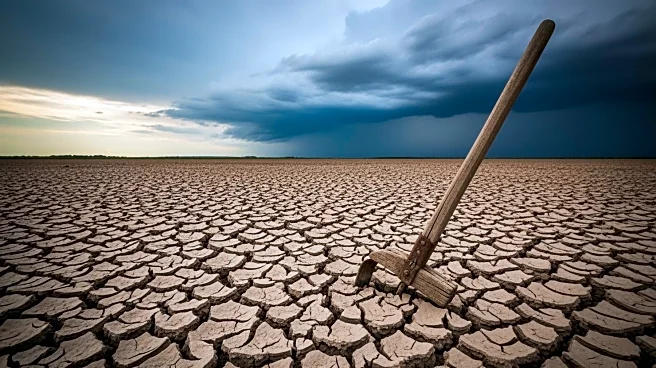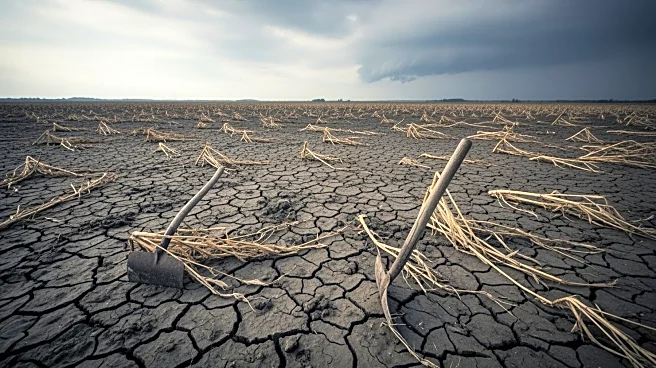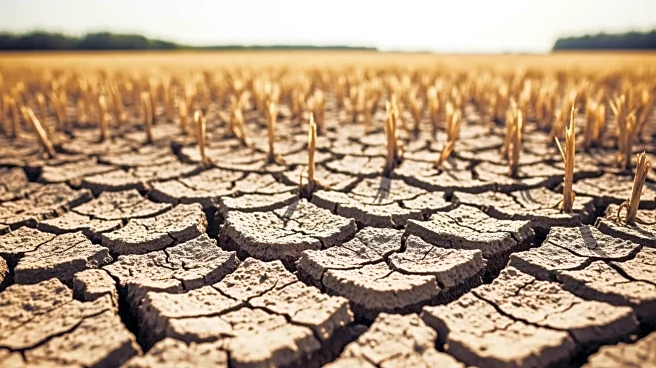What's Happening?
The Food and Agriculture Organization (FAO) has released a report highlighting the significant impact of global disasters on agriculture, with losses amounting to $3.26 trillion over the past 33 years.
The report details the destruction of 4.6 billion tonnes of cereals, 2.8 billion tonnes of fruits and vegetables, and 900 million tonnes of meat and dairy. Asia has been particularly affected, accounting for 47% of the global losses due to its high exposure to floods, storms, and droughts. Pakistan is noted as one of the hardest-hit countries, with recent monsoon floods affecting over nine million people and destroying 849,000 hectares of crops.
Why It's Important?
The report emphasizes the profound economic and social impact of extreme events on food systems, representing roughly four percent of the world's agricultural GDP. It highlights the role of digital technologies in transforming disaster risk management, offering new possibilities for understanding, predicting, and managing disaster risks. The FAO calls for proactive strategies to reduce further losses and ensure global food security amidst growing disaster risks.
What's Next?
The FAO advocates for the integration of digital technologies in agricultural disaster risk reduction, including AI, remote sensing, mobile connectivity, drones, and sensors. These tools provide hyperlocal, real-time insights that reinforce early warning systems and advisory services. The report calls for governments, agencies, and communities to adopt proactive strategies to protect the most vulnerable and ensure global food security.
Beyond the Headlines
The report also highlights the impact of marine heatwaves on fisheries, causing $6.6 billion in losses between 1985 and 2022. This underscores the need for comprehensive disaster risk reduction strategies that address both terrestrial and aquatic food systems.













